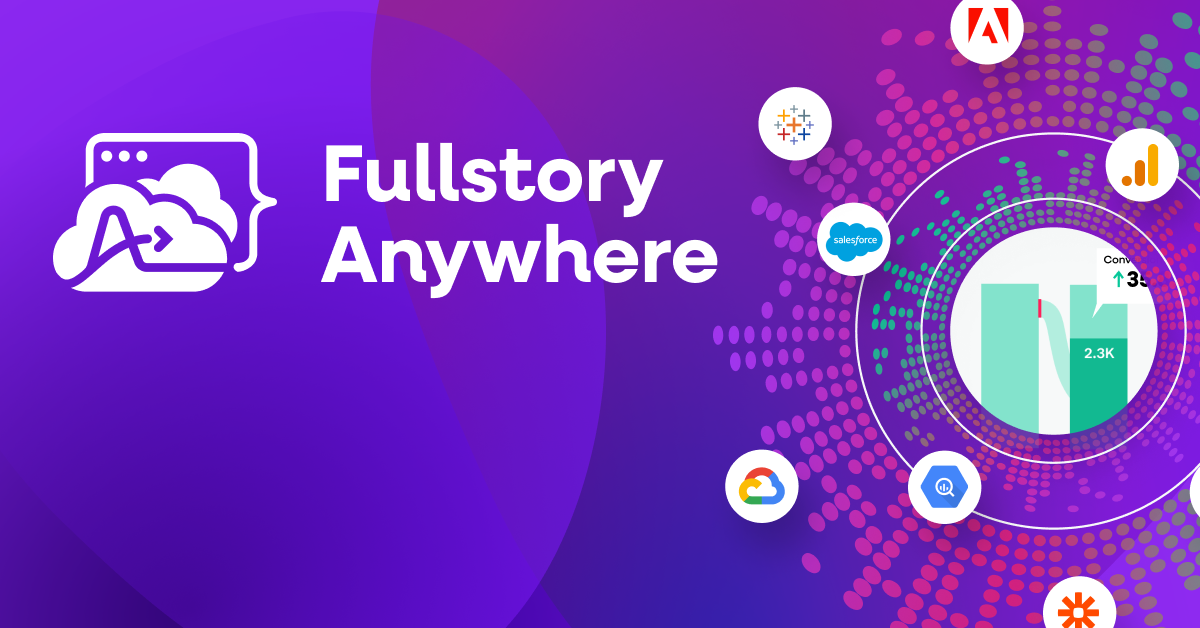While not all feedback is of equal importance, every piece of feedback has some weight in determining how a product will move forward. Effective product managers set up intentional feedback loops that allow them to monitor how different elements of their product are being experienced at various points in the customer journey. They also know how to interpret the feedback they receive and where to apply it in a product’s lifecycle.
Back at the 2021 Product-Led Alliance CPO Summit, Fullstory's Head of Product Marketing hosted a panel discussion where digital product leaders shared their insights and best practices for using these feedback loops strategically to make informed product decisions. The panelists included:
Dana Rosenberg, VP of Product Management, Mastercard
Gaurav Jaiswal, VP of Digital Product Management, Pearson
Nick Pai, VP of Product, Clubhouse.io
Akanksha Manik Talya, Former VP, Digital Product Management, GE Digital
Here are their top four strategies for using feedback loops to build better product experiences.
1. Know which types of feedback to use at different points in the product lifecycle
All product feedback is relevant, but not all product feedback is relevant all the time. Successful product managers employ different feedback gathering techniques depending on what phase or area of the product they’re focused on. For example, Gaurav Jaiswal’s team at Pearson leverages usability studies and primary research while in the ideation and research phase, but might turn to NPS surveys and A/B testing to understand the product experience later in the customer journey.
Another factor to consider, according to Akanksha Talya, is the mode and market your company is currently in. A small company that’s in a high-growth mode should be focusing on proactive feedback and how market data is trending, while a more established company can afford to spend more time reacting to feedback that might come from customer support channels.
No matter the product stage or growth phase, one key point that the panelists noted is the importance of continuously combining quantitative and qualitative data to get the full picture. Quantitative metrics are useful for high-level planning, but those softer qualitative insights add context that can help you drive action on a day-to-day basis.
2. Identify and prioritize the most meaningful signals from your pool of feedback
With so many ways to collect feedback, both from customers and internal stakeholders, it can be easy to get lost in the noise of questions, opinions, and feature requests. How can you determine which signals from your feedback loops are worth acting on?
For the panelists, the key is ensuring that the feedback signals you’re focusing on always align to the business’s larger goals, and referencing those goals often. For Nick Pai’s team at Clubhouse, a big piece of this is avoiding “unintended consequences” by thinking about what they don’t want to do. For example, acting rashly based on signal data might cause a company to inadvertently end up in front of markets and/or personas that aren’t part of the business strategy.
In an instance when multiple feedback signals crop up at once, Pearson teams prioritize them by evaluating which are strategically aligned with:
What they want the product to be, and
The anticipated ROI of acting on that signal.
This can mean asking questions like, “Does this help expand our market and/or drive adoption, or is it just a nice-to-have feature that only a subset of customers want?”
Of course, it’s inevitable that product managers will inadvertently act on a “false signal” and respond in a way that doesn’t actually benefit users. In these instances, Akshanka’s outlook is that product leaders should encourage a culture of “constructive discovery,” in which it’s okay to make—and learn from—mistakes.
3. Get stakeholder buy-in every step of the way
According to our research on the state of digital experience, organizations with more mature digital experience strategies and higher data maturity emphasize the democratization of data, enabling team members to directly access the information necessary to their job functions.
This practice was echoed by panelist Gaurav Jaiswal, who says that Pearson uses robust self-service dashboards that allow stakeholders to have an at-a-glance look at quantitative and qualitative product insights at any point in time.
In addition to ensuring that stakeholders and leaders can access relevant product metrics in real time, it’s also important for product managers to continually tie progress and projects back to high-level business goals. Dana Rosenberg says that her team at Mastercard is constantly aligning smaller outcomes with the larger objectives they set at the beginning of the year or quarter.
“When you go back to stakeholders with that ‘Aha!’ moment after achieving an outcome, it’s important to retell the story around your big objectives and ladder the results back to that original vision. This gives stakeholders visibility into how you got to the result, which has been critical to our success with executives.”
- Dana Rosenberg, VP of Product Management, Mastercard
Akanksha also stressed the importance of having visibility at multiple levels of an organization, saying that, “Leaders need to have strategic intent and a clear picture of how smaller milestone initiatives align with that strategic intent.”
4. “Unlearning” can be just as important as learning
For digital businesses, major market shifts can happen seemingly overnight, making flexibility even more critical for digital pros hoping to withstand evolution.
Nick’s advice is to avoid “getting stuck” thinking only of your existing customers, and to remember to look ahead to where the market is headed and where you want your product to be positioned within it.
Similarly, Gaurav says that his teams at Pearson try to “steer clear of confirmation bias and building yourself into an echo chamber.” While it’s easy to surround yourself with positive feedback, hearing what isn’t working for customers is far more valuable to your product’s long term success.
“Staying away from your own bias is key to continuing to grow and learn. You can’t fall in love with what you thought at the beginning,” says Mastercard’s Dana Rosenberg. Product managers who get caught up on one particular idea or school of thought might be less able to listen and respond to what’s going on in the market.
“We want to create a culture where we fall in love with the problem and not the solution, and then unlearning becomes way easier.”
-Akanksha Manik Talya, Former VP of Digital Product Management, GE Digital



